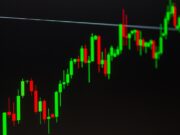The right stocks can make you rich and change your life.
The wrong stocks, though… They can do a whole lot more than just “underperform.” If only! They can eviscerate your wealth, bleeding out your hard-won profits.
They’re pure portfolio poison.
Surprisingly, not many investors want to talk about this. You certainly don’t hear about the danger in the mainstream media – until it’s too late.
That’s not to suggest they’re obscure companies – some of the “toxic stocks” I’m going to name for you are in fact regularly in the headlines for other reasons, often in glowing terms.
I’m going to run down the list and give you the chance to learn the names of three companies I think everyone should own instead.
But first, if you own any or all of these “toxic stocks,” sell them today…
Walmart (WMT) – High Expectations, Slowing Growth, and Tariff Risks Could Weigh on Shares
Walmart has been one of the most reliable retail plays over the past five years, delivering a solid 146% gain as it navigated inflation, shifting consumer trends, and supply chain disruptions. But after years of outperformance, cracks are beginning to show. With slowing growth, a stretched valuation, and potential tariff headwinds, the stock could be primed for a pullback.
The company’s fiscal 2025 results were strong, with revenue climbing 5% to $681 billion, but the outlook for fiscal 2026 was underwhelming. Walmart expects revenue growth of just 3%-4% this year—a noticeable slowdown. If tariffs disrupt supply chains and raise costs, that growth forecast could be at risk.
The bigger issue? Valuation. Walmart’s P/E ratio has ballooned to 41, well above its five-year average and significantly pricier than rival Target, which trades at just 13 times earnings. Investors have been willing to pay up for Walmart’s resilience, but with growth decelerating, that premium may not be sustainable.
The setup here isn’t great. Walmart’s stock is priced for perfection at a time when retail headwinds are building. If earnings disappoint or tariffs escalate, a sharp correction could follow. While Walmart remains a strong long-term business, investors should be prepared for volatility ahead. Taking some profits at these levels might not be a bad idea.
CrowdStrike (CRWD) – Slowing Growth and High Valuation Make This a Risky Hold
CrowdStrike has been a high-flying cybersecurity leader, but cracks are starting to show. Shares are now up less than 6% over the past year, and after a weak profitability outlook for fiscal 2026, investors are re-evaluating whether this stock is worth the premium price tag.
The biggest concern? Decelerating revenue growth. The company’s net dollar retention, which measures how much existing customers are spending, has slipped from 119% a year ago to 112% this past quarter. That’s a troubling trend, especially given that CrowdStrike’s post-outage customer retention programs are coming to an end. Even with revenue climbing 25% to $1.06 billion, the market isn’t thrilled with slowing momentum.
On top of that, CrowdStrike’s fiscal 2026 guidance was a major disappointment. The company expects revenue growth of just 20%-22%, down significantly from previous years. Adjusted EPS guidance of $3.33-$3.45 was well below Wall Street’s expectation of $4.42. The culprit? Higher upfront investment costs, which are squeezing margins at a time when investors want to see profitability improve.
CrowdStrike remains a strong business with a promising long-term outlook, but at nearly 19 times forward sales, the stock still looks expensive. If revenue growth doesn’t reaccelerate in the second half of the year, this valuation could start to look unsustainable. While cybersecurity is a critical sector, there are better opportunities at more reasonable prices. For now, this is one to avoid.
Costco (COST) – A Great Company, But an Overpriced Stock Facing Headwinds
Costco is one of the most well-managed retailers in the world, but even great businesses can be bad investments at the wrong price. Shares of Costco dropped over 6% following its latest earnings report, and for good reason—earnings missed estimates, tariffs could create additional headwinds, and the stock is still trading at a sky-high valuation.
The company posted earnings per share of $4.02, falling short of Wall Street’s expectations by $0.09, while revenue of $63.7 billion came in slightly ahead of estimates. However, management acknowledged that tariffs could have an impact on pricing and profitability, as roughly one-third of its U.S. sales involve imports. CFO Gary Millerchip assured investors that Costco is well-equipped to navigate pricing pressures, but this is an issue affecting the entire retail sector.
Costco did recently raise its membership fees, which contributed a 3% boost to fee income this quarter. While this will provide a modest tailwind over the next year, it may not be enough to justify the stock’s current valuation. Even after its recent pullback, Costco still trades at 53 times forward earnings—far above historical norms and significantly higher than other retail giants.
Costco is a fantastic company with a loyal customer base, but at these levels, the stock looks overvalued, particularly with economic uncertainty and tariffs creating additional risks. For now, investors may want to hold off on buying the dip until Costco’s valuation becomes more reasonable.






